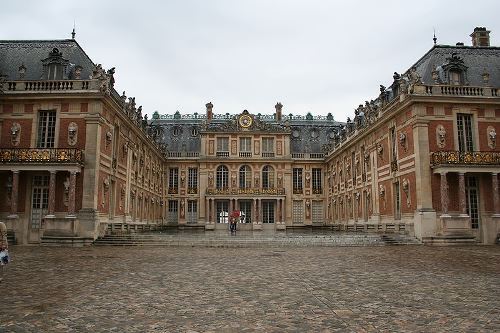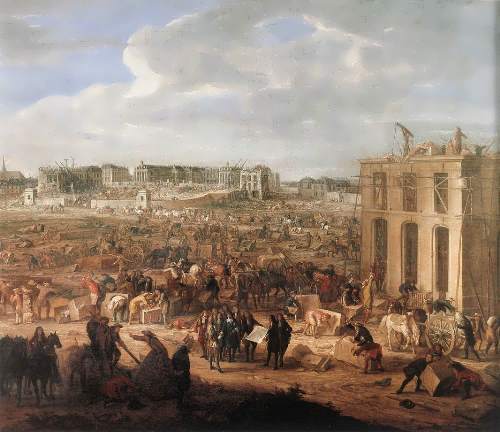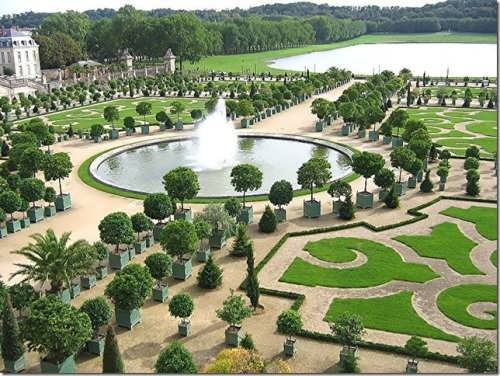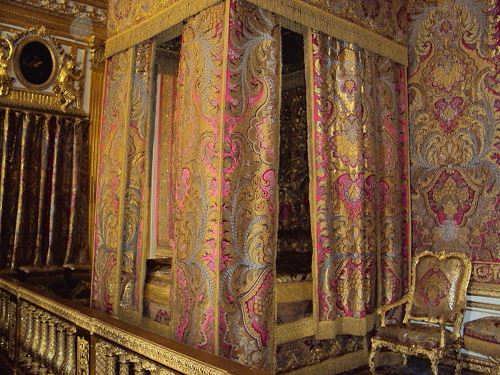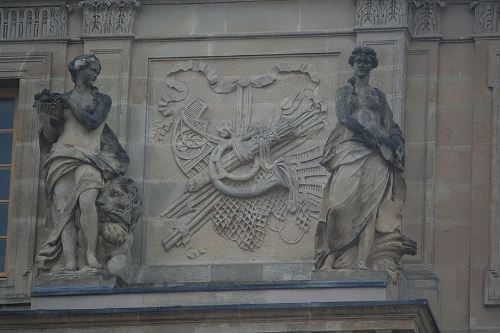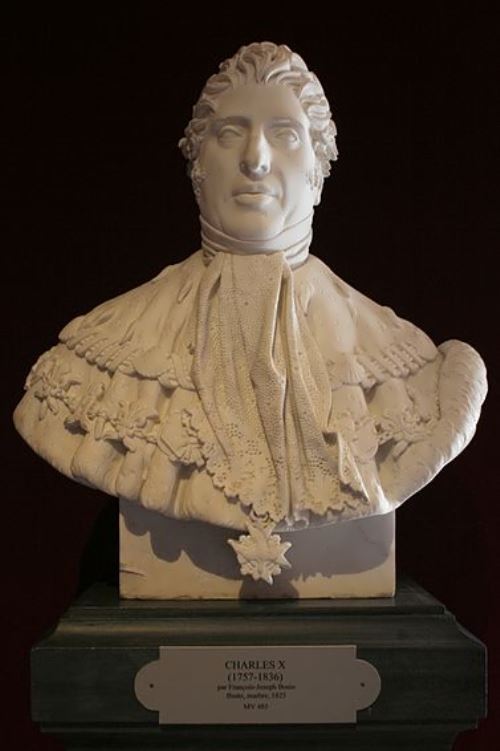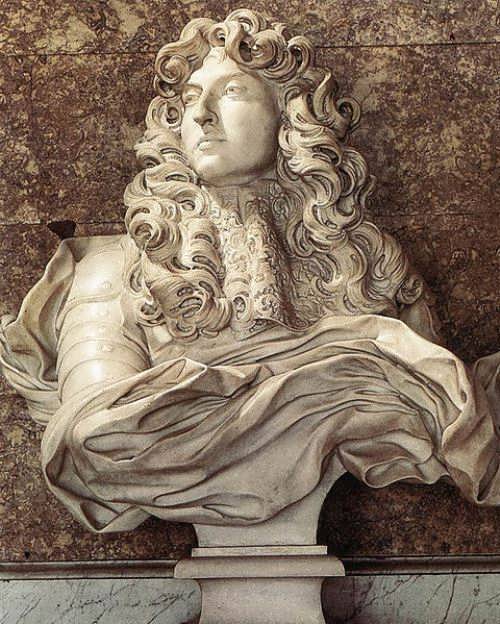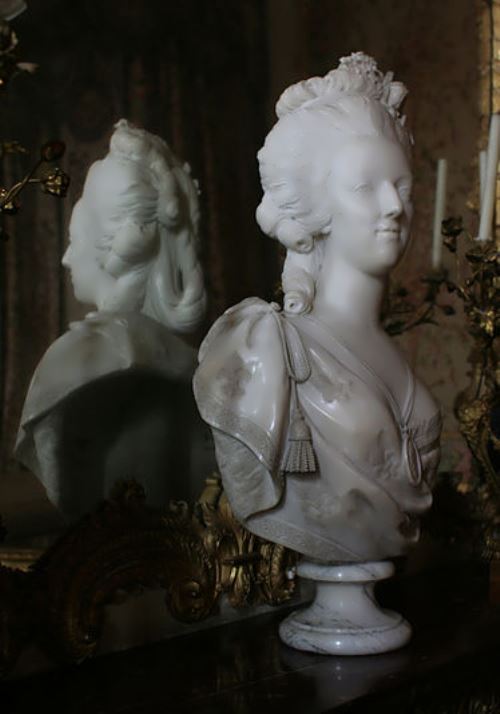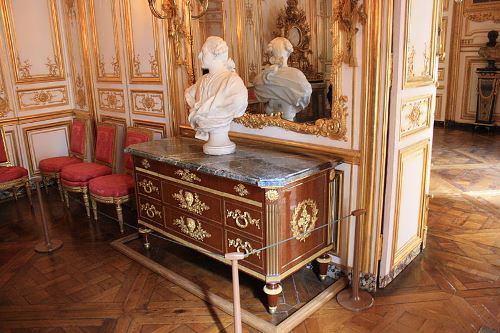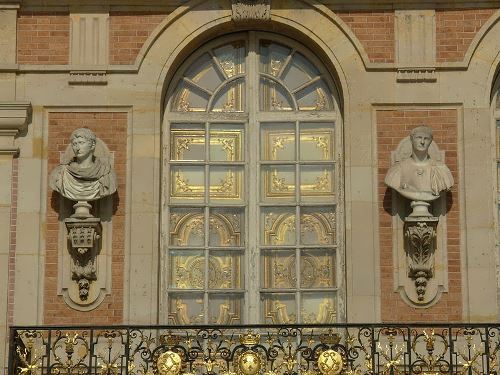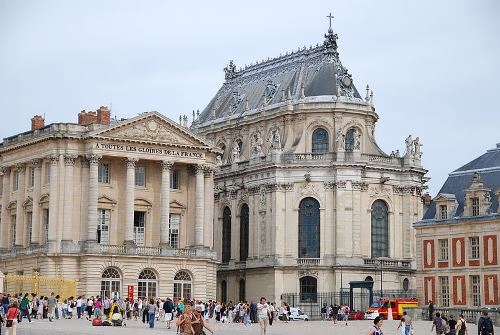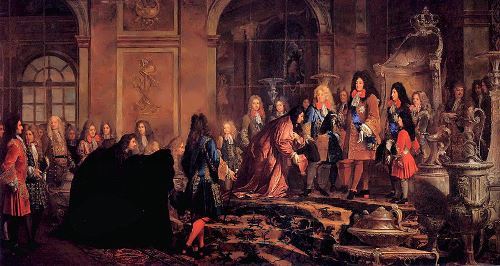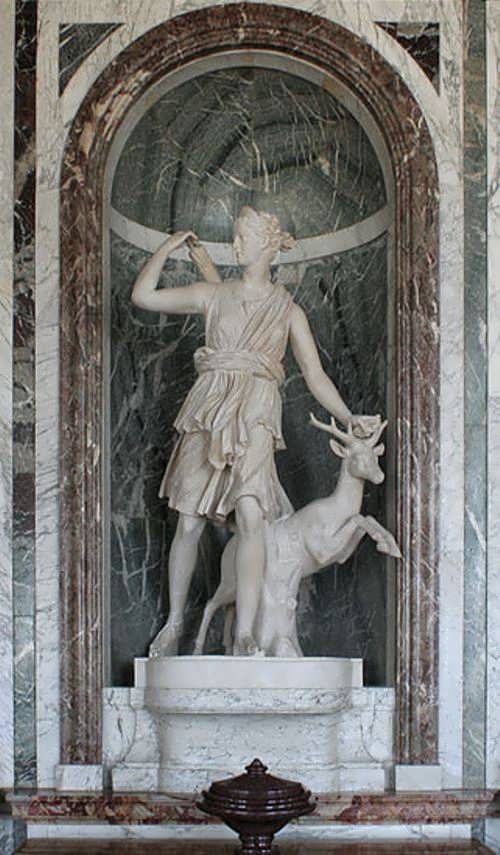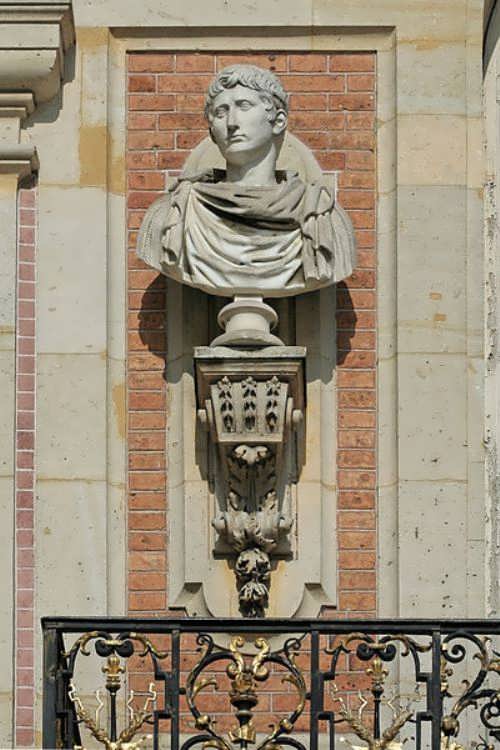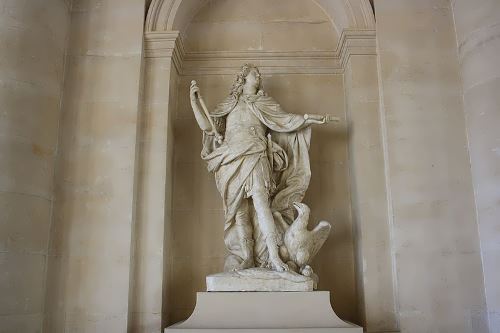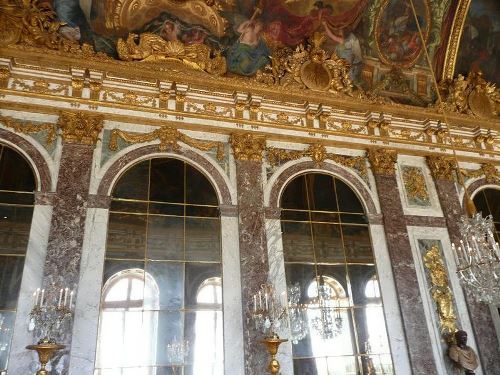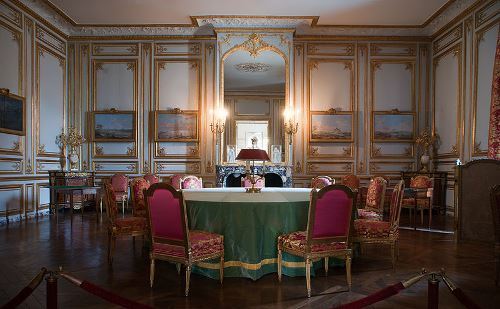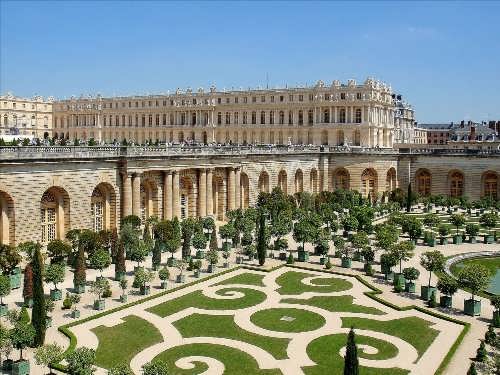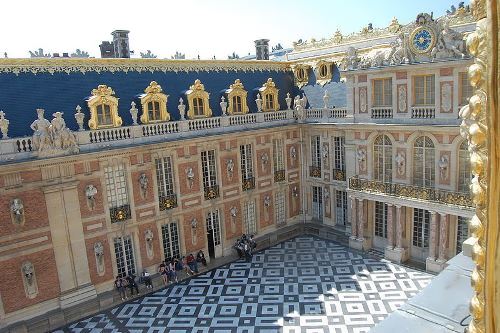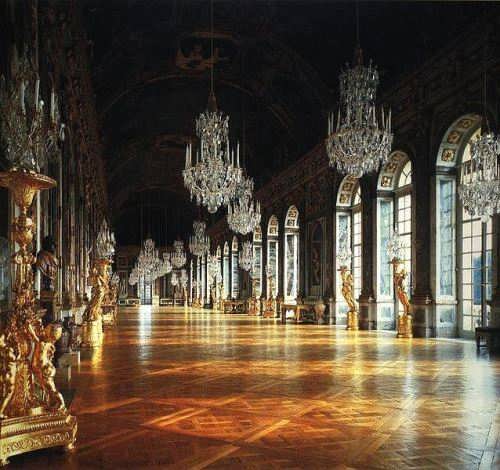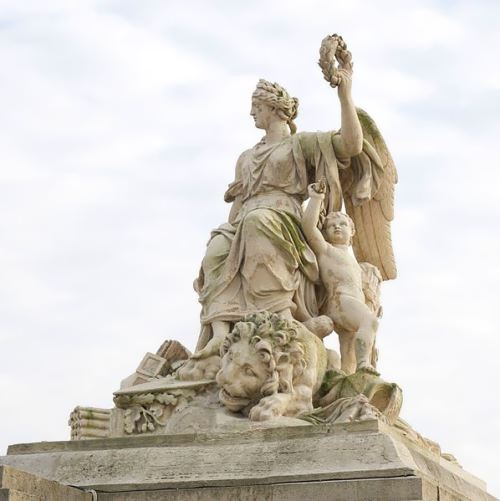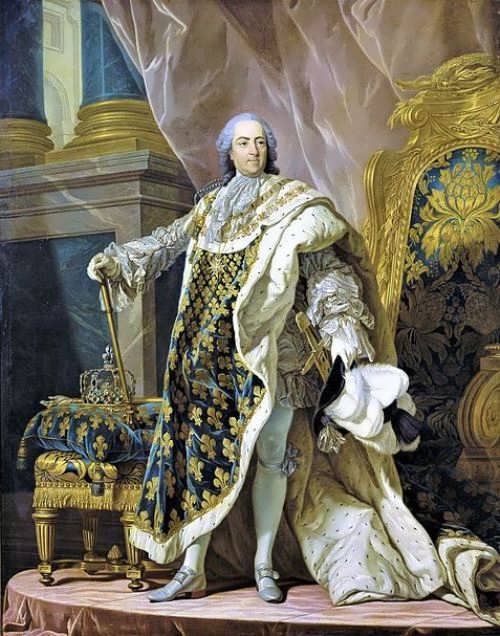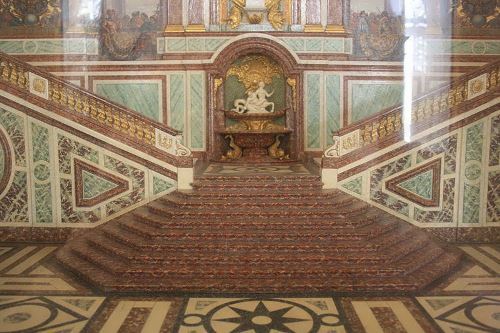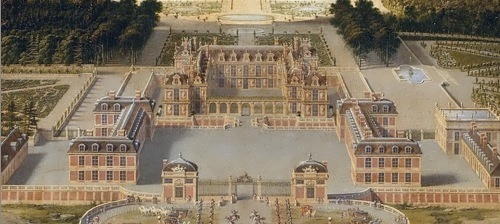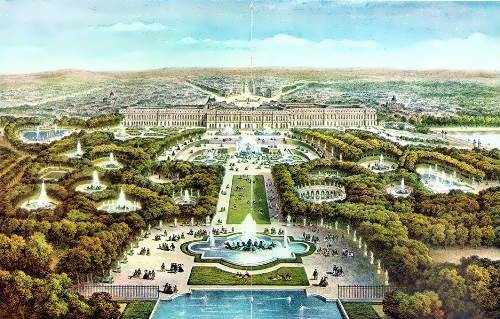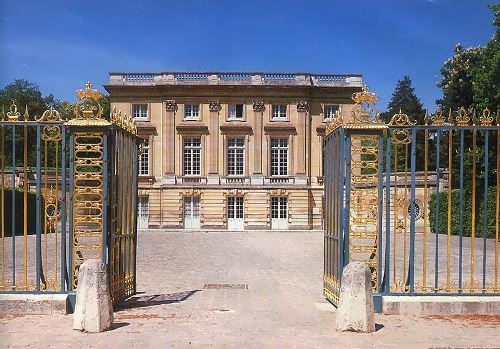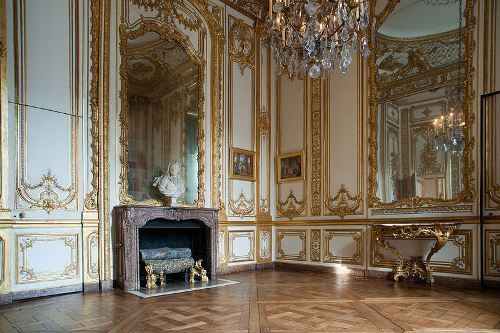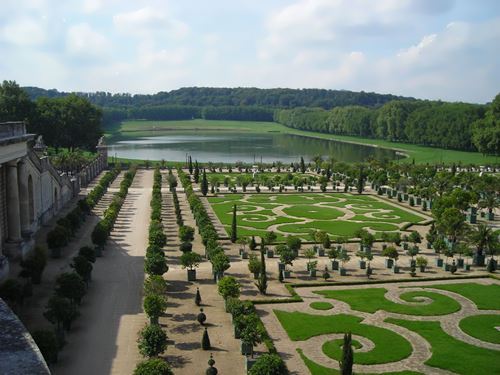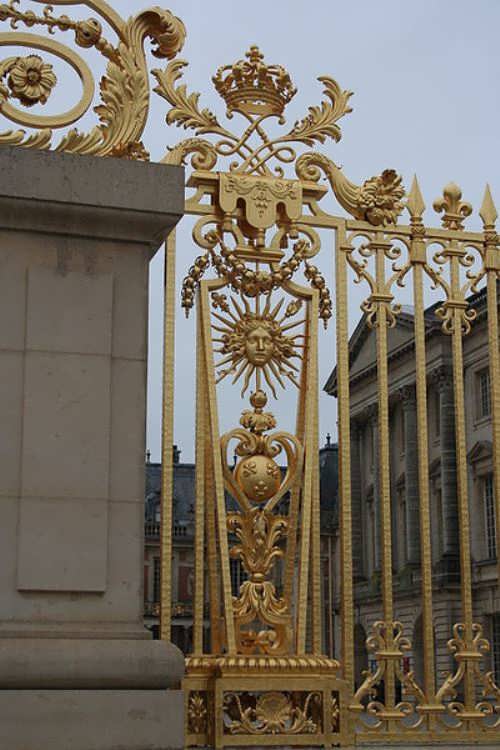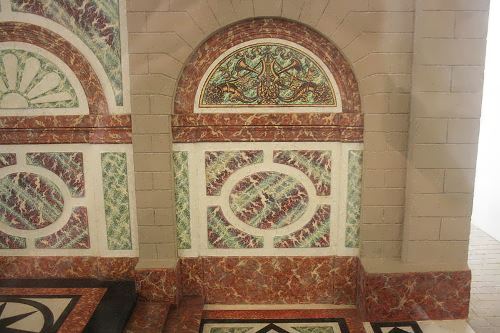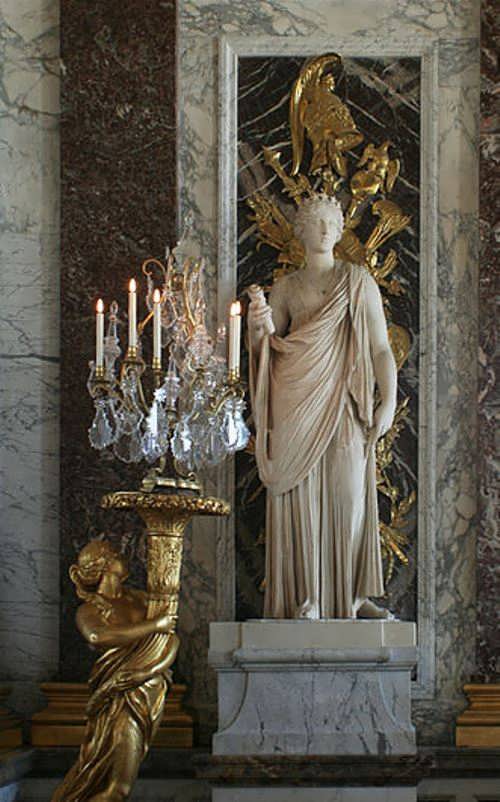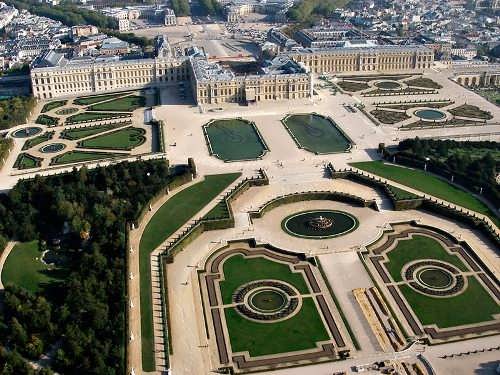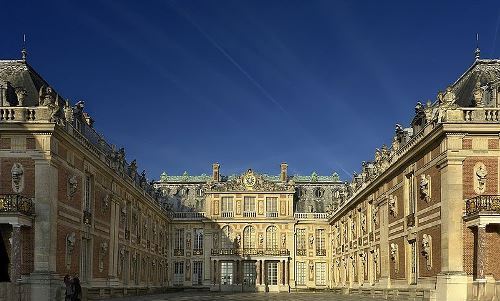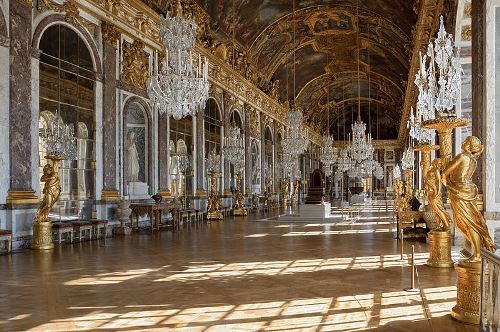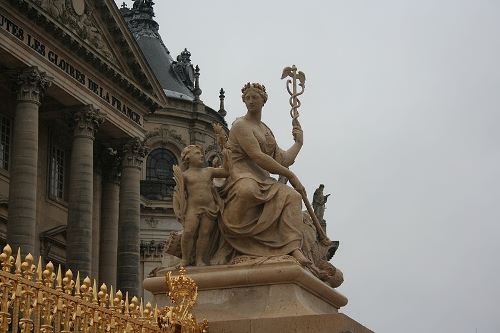Palace of the Sun King
King Louis XIII, a great lover of hunting, built a small hunting lodge in the old village of Versailles, which was located in the forest about 23 km from Paris. His son, Louis XIV (1638-1715), an ambitious Sun King, who loved balls and performances, decided to build palace with park ensemble at Versailles and turn it into the main residence of the French kings.
Famous architect Louis Le Vau created the original version of the palace. The work began in 1661. André Le Nôtre was responsible for the construction of the park ensemble, planting trees, making flower beds, avenues. 23-year-old king spent a huge amount of money during the first two years of the construction and the palace treasurers warned him that the royal treasury quickly would be empty.
After the death of Le Vau, architect Jules Hardouin-Mansart led the building at Versailles for thirty years. The total number of employees working in different years was about 30 thousand people.
In 1664, the Royal Palace, the Marble Courtyard and the front yard in front of the fence were completed. The palace became one of the biggest and richest in the world. There were 700 halls and rooms on its three floors. And each of them had its name and mission: Royal Chapel, the Mercury Lounge with pictures of Italian painters, the Hall of abundance, the Hall of Mirrors, Salon of Venus, Salon of Diana, Salon of Mars … All of them were decorated with paintings, tapestries, portraits, vases, sculptures, and beautiful carpets. Guests, foreign ambassadors, heading into the royal chambers, passed the rooms and admired the unparalleled luxury. About 1300 fireplaces heated the rooms.
In 1682 Versailles became the permanent residence of Louis XIV. Finally he fulfilled his plan – the monarch gave balls, invited guests and ruled the world. He was the “chief architect” of the new palace. Louis XIV liked walking in the garden among the flowers, than reading, and he loved the park more than the stone palace, by chance, many ceremonies were held in the open air. Louis was absolutely convinced that only monarch knew what was good of the state. “The State, That’s Me (L’Etat, C’Est Moi)” – said young Louis and tried to turn Versailles into a luxurious royal residence as soon as possible. He wanted to make Versailles the center of political and cultural life of France. King invited representatives of the creative world – writers, poets, artists, musicians.
Gradually Versailles neighborhood filled with servicemen. There were ateliers, hairdressing salons, gunsmith’s, watchmaker’s, coppersmith’s shops.
Every year, Versailles became more beautiful and was opened to the public. There was a time when cows and goats walked through the halls. They “brought” fresh milk.
The Hall of Mirrors, located in the center of the palace, was the main hall. Balls and various festivals took place there. Many of the most important events are associated with this hall. Treaties of alliance were signed there, including Treaty of Versailles 1783 that ended the war in America, and Treaty of Versailles 1919, which marked the end of the First World War. In 1871 William I was proclaimed emperor of Germany in the Hall of Mirrors.
In total, the palace and the park area began to occupy an area of over 700 hectares. Artificial canals appeared on its vast territory. Engineers built a water intake system from the Seine.
Louis XIV died in Versailles in 1715. His successor, the great-grandson Louis XV (1710-1774) hired architect Jacques Ange Gabriel to build the Opera House and now famous Petit Trianon – miniature castle, where queen Marie Antoinette lived.
The revolution of 1789 put an end to the lush palace life – the royal family moved to Paris. In 1837 Versailles became the National History Museum.
